DISCLAIMER
This is a story of fictionalized history.
It is based on actual historical data, recent archaeological discoveries and 21st Century DNA technologies.
Scroll to the end of the story for actual historical and scientifical data.
TOTAL EXTINCTION!
What's Happening?
In Puerto Rico today...
In museum galleries,
And well attended street festivals,
Folklórico Cultural Events.
And people identifying by applying iconic tattoos,
There has been a revival of the original indigenous Taino culture.
A noble and complex people tragically declared non-existent since 1550 and completely buried in time.
A Long forgotten people now being celebrated again by their newly identified genetic ancestory.
Recent archaeological discoveries and advances in genetic technology have shown that most modern day Puerto Ricans possess mitochondrial DNA from a single Taino female.
This is the story of that brave, young, single Taíno female behind this incredible cultural reawakening.
The Island of
Forgotten Souls
A Forbidden Love Story .
Caught up in a Global Colonial Struggle!
And Destined for Tragedy!!
STORY BACKGOUND
The forgotten War that determined the future of the western hemisphere.
1519
Before
The conquest of the the Aztecs and Mexico.
Before
The conquest of the the Incas and Peru.
The conquest of
The Taíno and The Island of Borikén.
(Puerto Rico)
Introducing:
Agüeybaná I
The Island's Head Cacique,
Supreme Leader
He was leader of the Consul of Caciques.
His Daughter is Yuisa
“Destined to be a Great Cacica”
Taíno Woman Chief
All the Taínos knew of her.
All Taínos loved and respected her.
She could hunt like a hunter.
She could fight like warrior.
She explored the Caves with the men.
The 3rd largest "Cave System" in the world.
She could discuss issues with the Elders.
She could Speak to the people.
She studied history from the Wise Men.
She learned the "Taíno Cave Origin Story"
Life on Borikén
(Puerto Rico)
"The Late Ceramic Period"
1200 – 1500 CE
Continues as it had for millennia.
Over 100,000 Taínos lived in small villages.
The Taínos made ceramics.
The Taínos made baskets from palm leaves..
The Taínos collected fruits all year round.
The Taínos farmed Cassava.
The Taínos baked Casabe, Cassava bread.
The Taínos were excellent fishermen.
The Taínos traveled between the islands.
The Taínos etched complex pictographs in stone.
The Taínos created the iconic Coqui pictograph.
Represented the ubiquitous Coqui frog.
The Taínos played the scared "Mesoamerican Ball Game".
The same scared "Ball Game"as the Mayans Played.
The Taínos collected gold in the mountain streams.
Fighting the Carib Invasion
The Taínos were fighting the Cannibal Caribs, who were island hopping from South America.
Eating their way from island to island.
The Cannibal Caribs are constanly kidnapping Taíno women for sex slaves.
The Tainos fight the Cannibal Caribs when they find them.
THEN SUDDENLY..
November 17, 1493
Columbus second voyage
The Taínos scouts see Columbus' ships.
The next day they land.
Then.....Columbus comes ashore.
He appeared to the Taínos rather innoquios.
The Taíno are fascinated, they think the Spanish are gods.
Columbus meets Agüeybaná I who shows Columbus his gold Guanín.
Columbus immediately becomes fixated on Agüeybaná's gold Guanín.
Columbus quickly decides to befriend Agüeybaná. He gives him cuttings of sugarcane from the Canary Islands and Pineapple from Guadelupe.
The Taíno immediatly see the utility of sugarcane.
it soon becomes their major building material.
There is no Bamboo in Borikén.
The Taíno show the Spanish Hammocks.
The Spanish immediatly adopt Hammocks for sleeping aboard ship.
By November 22, 1493,
The Spanish sail away.
Not to return untill 1508
How did Columbus explain his 1st and 2nd Voyage to his Royal Benefactors?
The Reconquista of Spain
In January 1492 the combined kingdoms of Castile and Aragon conquered the Emirate of Granada (1232-1492) the last vestige of Muslim control in Spain.
King Ferdinand and Queen Isabela standing in the Patio of Lions in The Alhambra Palace in Granada.
The Portuguese had reached India and the Spice Islands in 1480.
Columbus, had been working for the King and Queen for years.
He had finally convinced them he could find an
"Alternate route to India and the Spice Islands".
Columbus' 1st Voyage
Columbus is given three ships, The Niña, The Pinta and The Santa Maria and 90 men.
Columbus learned Celestial Navigation from the Portuguese.
Columbus lands on San Salvador, October 12, 1492
Columbus meets the Taíno-Arawak Cacicque (chief) who is wearing a gold pendendet.
The Tanío's Gold Guanín!
Actual Guanín
A Lost wax Sculpture.
56% Gold 18% Silver 25% Copper
Columbus obviously told the Royal couple....
"That all these naked
"Indians were runing around with large disks of gold arounf their necks!"
On Christmas Day 1492, the Santa Maria rounds aground on the north shore of Hispaniola.After receiving permission from the local Taîno Cacique Guacanagari, he builds the continent's first european settlement. Using the ship's timbers, he names it Navidad and leaves 39 men behind.
Columbus arrives back in Spain with only two of the original three ships.
Columbus' 2nd Voyage
September 1493
The Spice Islands and India are forgotten.
Gold becomes the new focus!
16th century engraving showing the Spanish forcing Taínos to mine gold in the area of the Sierra de Liquillo.
Columbus is now given:
17 Ships
1,200 men.
300 soldiers
24 Mounted Conquistadors
24 Stallions
10 Mules
Columbus discovers the island of Borinquén (Puerto Rico)
on November 17 1493
Columbus discovers the Settlement of Navidad destroyed and all 39 men had probably been eaten.
Columbus and the Spanish brutally retaliate!
The Conquest of The Americas Has begun!
From 1500 through 1600
100,000,000 Native Americans will die.
From violence and enslavement

And Smallpox and Measeles

Meanwhile in Spain:
Introducing
Orpheus Del Zaragoza
Orpheus came from a noble family.
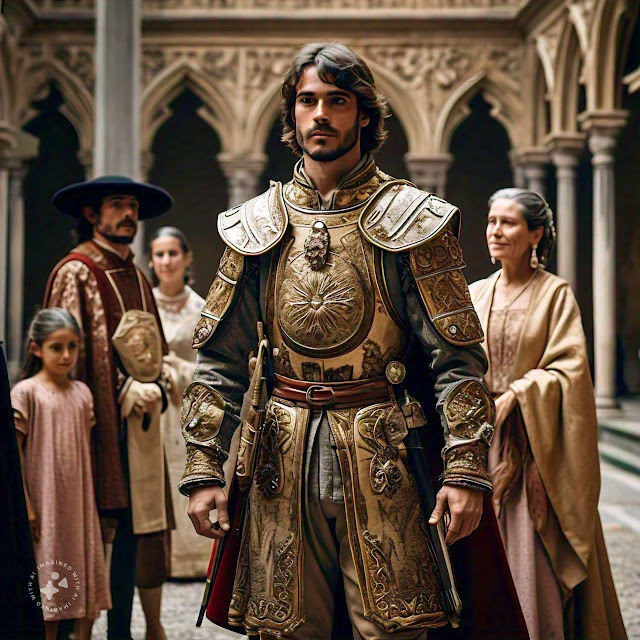
Handsome and a trained classical guitarist, he was well liked and admired.
Orpheus especially likes playing music before audiences of young noble women.
It
was only a mater of time, like many of his fellow young noblemen,
before he enlisted with the swashbuckling conquistadors. Seeking wealth,
titles and prestige in exploring the Indies. 
He trains hard and long.
Orpheus goes from young man...
To seasoned Conquistador.
Soon, Orpheus and his childhood friend, Alonso become full Conquistdors.
Orpheus enlists to go to the New World.
Orpheus likes playing music for fellow Conquistadors.
Even on board ship to the New World.
Ponce de Leon
Arrives in Puerto Rico.
1508
His orders come directly from King Ferdinand!
Colonize the Island.
Enslave the Natives.
SEND BACK GOLD & SUGAR
Ponce de Leon arrives with a force of Spanish conquistador.
He is fresh from a horrific Taino massacre on the island of Española.
He tells his men they are here to Conquer Borikén.
Ponce Leon reminds his men that they have explicit orders from the Crown to seek out the gold Columbus boasted about.
Ponce De Leon tells the Taino that his Spanish Cacique demands gold!
Ponce De Leon tells all the Taíno Caciques he wants gold!
Ponce de Leon offers the Taino eternal life through his one true God.
Ponce De Leon establishes
the first city in
Borikén - Puerto Rico
Caparra 1508-1521
From the very beginning, he intended on making the settlement self-sufficient in fresh produce and meats. He had successfully farmed and ranched earlier in the first Spanish settlement Santo Domingo on the neighboring island of Hispaniola.

Selling his fresh produce at the highest prices to ships returning to Spain.
He decided his new town would be two miles from the bay.
Near Tainó villages for labor.

The Taino Indians were still compliant and friendly and destined for Slaves and manual labor. And within walking distance of the fields, grazing pastures.
And the river gold mines.
However, the site was damp and swampy and prone to diseases. The settlement’s Mendicant Friars, who had been sent by the Church and the Crown were there principally to baptize and protect the Tainós.

They had continuously been insisting on moving the settlement to a Rocky prominence at the very tip of a small islet at the entrance to the bay.
Ponce del Leon knew that’s such an isolated, while also a highly defendable location would make the settlement even more reliant on Spain.
Eventually, Caparra proved indefensible and was completely abandoned.
The new Capital was relocated in 1521 to the current day location of Old San Juan.

He quickly decides where to build his capital, Capara,
Two miles from the coast.
Agúeybaná I peacefully attends Capara’s founding ceremony.

Cappara is quickly built, with one stone house.
A system is developing to enslave all the Taíno.
The Spanish settlers quickly established the first Encomienda system under which natives were distributed to Spanish officials to be used as slave labor under very harsh and brutal conditions.
This lead to many Taíno deaths.
Soon the Indians are forced into harsh slave labor...
Soon they have exhausted the available Taíno on Borikén.
Soon the Spanish are enslaving Taínos from neighboring islands.
Building the settlements.
Building a stone fortress.
Mining for gold.
Planting new sugarcane plantations.
Sugar was becoming like the "New Gold" in Spain
To bake Casaba Bread.
Ponce De Leon grows wealthy selling Casaba Bread, with a 28 day shelf life to ships returning to Spain.
Agüeybaná I finally expresses his anger!
The drunken Spanish are kidnapping and raping Taíno women!
However.....
Agüeybaná is cautious, Still believing the Spanish are gods!
into this situation....
Orpheus Arrives

He is very happy to be off the boat.
Orpheus and Alonso are very excited about their future.
He meets Agüeybaná I.
And is introduced to his daughter, Yuisa

He plays his music to soothe everyone homesickness.
To the other conquistadors.
The Spanish settlers

He goes to the Taíno village to charm them.
Orpheus enthralls the Taíno by learning their children's nursery rhyme.
The "Coqui Song"
He meets Yuisa again.
He plays for her.

Both her innocence and self assurance beguile him.
They are smitten with each other.
Over the next few weeks, they spend much time together.
She explains to him the Taino history and beliefs.
Yuisa tells of the God “Hurricane”
And how powerful Hurricane is.
They fall in love.

Yuisa shows Orpheus how to plant cassava.

Yuisa shows Orpheus how to fish like a Taino.
Yuisa shows Orpheus how to communicate with the wild parrots.
Yuisaa shows Orpheus how to gather land crabs.

Yuisa shows Orpheus how to hold a green boa.
Yuisaa shows Orpheus the secret Taino places.
Yuisa decides to embrace Orpheus’ God.
Yuisa is baptized.
Given the Christian name of Luisa (Loíza).

Orpheus asks her to marry him. They go to Agüeybaná I to ask for her hand.
He is heart broken.
Yuisa was to marry another Casciques’ son, to further Form alliances.
She convinces him of alliances with the Spanish will be beneficial as well. They can help battle the Caribs!
Agüeybaná I reluctantly agrees.
They marry in a Taino ceremony.
Orpheus' childhood friend Alonso is the best man.
They are now Man and Wife.
Orpheus convinces Ponce de Leon to attack the cannibal Caribs.
They attack the Carib village.

They see young boys held in enclosures.
Castrated and being fattened to eat.
The Caribs were eating their own sons from kidnapped Taino women.
The priest declares them unfit to baptize.
The priest orders them to be annihilated.
Orpheus and Yuisa have a daughter.
They baptize her.
Orpheus' childhood friend, Alonso is the Godfather.
Ponce De Leon orders African Slaves to be imported to Puerto Rico.
To replace the diminishing Taíno workforce in Mining for gold.
To help on the new sugar plantations.
To help building permanent fortifications.
Agüeybaná I Dies
They take his body to the
"Cave of the Underworld"
Aguüeybaná II
Yuisa's Uncle
(Güeybaná)
Takes Power
Aguebaná II hates the Spanish!

The Taínos still believed that the Spanish could not die.
Agüeybaná II orders that
the Conqistador Diego Salcedo be drowned.

He should be tricked by showing him gold.
Some say it was the promise of many available women by a lake.
He was really to be drowned in a river.


Agüeybaná II orders the warriors to sit by his body for three days to see that it does not come to life again.

Like the Spanish Son of their God.
They return to Agüeybaná II with Diego's helmet.
The Taíno learn the Spanish can die.
Agüeybaná II calls a Caciques meeting.
They declare WAR!
Ponce De Leon's Cappara is burned.

THE WAR BEGINS
1511

San Juan is Founded!
Spanish begin move to a more defensible harbor islet.
The Spanish build a defensible wooden bridge to the main land.
Immediately begin building a stone fortress.
They soon build an impressive fortress.
The Taínos engaged the Spanish using traditional battle techniques.
Two frontal assaults prove very painful for the Taínos.
Both frontal assaults were disastrous!
Soon, they resort to Guerrilla warfare.
And start to ambush the Spanish in the jungle.
Ponce De Leon orders Orpheus not to participate in upcoming military action!
Ponce De Leon then issues an order to destroy Agüeybaná's village.
The village is left to burn and is totally destroyed!
The Spanish kill many Taíno women and children!
Yuisa is left no choice but to take up arms herself.
Yuisa runs towards the battle.
She engages with the Spanish!
Yuisa at first, is very proud that she killed a Conquistador.
Then...
She killed Alonso!
Yuisa is so sorry, she can't belive what she's done!
Yuisa prays to her new God for forgivness!
Orpheus is horrified when told Alonso is dead!
And that it was Yuisa who killed him!
Ponce De Leon tells his men to be on the look out for Yuisa. Try to bring her back alive. She's been baptized.
"We need to make an example with her!"
Yuisa, is devastated by the war.
Orpheus try to console her. She is irreconcilable.
Orpheus tells Yuisa, his God is merciful and will forgive her!
He will go and Tell Ponce de Leon, that Agüeybaná II forced her to take up arms against the Spanish!
Orpheus leaves for the fort!
Yuisa feels she has no choice to save her mixed race baby. She gives her daughter to her friends with specific instructions...
To give her child to the Spanish.
Yuisa decides to flee!
She disappears into the jungle
Orpheus hears about the baby.
He goes looking for her.
Suddenly!!
Yuisa is captured by marauding Caribs!
Orpheus hears her screams!
Orpheus engages the Caribs!
Orpheus defeats the Caribs.
The Caribs flee!
Yuisa is safe!
Orpheus and Yuisa are together again!
Then, out of nowhere!
Yuisa is threatened by a large venomous snake!
Yuisa is bitten by the venomous snake!
Orpheus runs to her side.
Both of them are very frightened, they know the venom is fatal!
Yuisa Dies.

Devastated, Orpheus brings her back to her Taíno family to bury.
The Taíno take her to the entrance to underworld at....
“The Cave that Births the Rio Camuy”
The Taíno's Lepers prepare the bodies for the trip to the underworld.
Orpheus goes to Agüeybaná II. They are both irreconcilable!
He vows to bring her back!
Agüeybaná II tells him to consult the old wise witch doctor. That they regularly visit with the dead.
Orpheus goes into the jungle to seek the witch doctor.
The witch doctor tells him about the Underworld’s gate keeper.
The powerful God called “Hurricane”.
How he must offer him something he wants, to let her go!!
Orpheus is determined to retrieve Yuisa!
He is offered the magic potion to visit with the dead!
Orpheus drinks the Magic Mushrooms.
He tells Orpheus to return to the house they shared together and go to sleep!
Orpheus returns to the home they built.
This the home they shared together.
This is the home where Yuisa lived
Orpheus closes his eyes, imagining Yuisa.
Orpheus Falls Asleep
Orpheus suddenly reawakens in the jungle.
Standing in front of:
"The Cave that Births the River Camuy"
This cave will lead Orpheus to the Underworld!
He enters the cave Carrying his guitar.
He is hoping to charm the Taíno God, Hurricane.
Orpheus always finds comfort in playing to himself!
He feels less alone!
He come across an underground river.
An old Taíno in a canoe approaches.
Friendly and gracious, the old Taíno ferryman helps him cross the river in his canoe.

A ghost? A harbinger of death?
He is then confronted by The Underworld’s Gate Keeper,
The Great God, Hurricane.
He is a giant coqui frog!
He lets the dead in.
He keeps them in the underworld!
Orpheus starts to charm the God Hurricane with his music.
He offers him a song.
"You can sing to your self for all eternity!"
Orpheus teachers Hurricane the Taíno childern's, "Coqui Song".
He allows Orpheus to enter, while still alive!
Orpheus then enters the
Underworld of the Dead!

Orpheus searches for Yuisa. .
Orpheus prays to find her.
Orpheus walks among the dead souls
Orpheus finally finds Yuisa.
Orpheus starts to bring her out of the underworld.
Suddenly....A startled Hurricne appears.
Hurricane is Furious!
"No one ever leaves the Underworld!"
Hurricane recognizes Orpheus.
Hurricane starts singing the "Coqui Song."
Yuisa realizes Orpheus taught him the song.
Hurricane says they can leave,
"But their love will be tested!"
Orpheus and Yuisa reach the river.
The Old Indian ferryman comes.
The Old Indian ferryman is now very angry.
He refuses to take them across!

"No one ever crosses back!
Orpheus
convinces him to take them back across.
Orpheus promises to
"Send many dead
Taínos for him to ferry across!"
Suddenly Outside.
A Hurricane begins!
Those Taínos that know...
Know this one is different!
Their God – Hurricane is indeed very angry!
Orpheus and Yuisa approach the entrance to the cave, and hear the Hurricane raging outside!
They hesitantly emerge from the cave.
Orpheus and Yuisa step out into a raging Hurricane. Yuisa senses that this Hurricane is different.
Orpheus realizes this is the test Hurricane spoke about.
Orpheus and Yuisa are blown about!
They hold on tight!
They begin to lose their grips!
Orpheus and Yuisa lose their grips!
Soon, they are separated!
The Hurricane blows her back into cave.
She is taken by the raging river!
Orpheus finds himself alone,
Orpheus realizes that Yuisa was swept away in the raging river!
Yuisa Is Now Gone Forever!
Orpheus rages against the Gods!!
Orpheus Awakens
Was it ALL a deream?
Orpheus Runs back to the fort
The War must still be raging!
He finds the fort empty.
Everyone has left for a large raid on Agüeybaná new hideout!
Orpheus rushes to warn Him. Orpheus Gallops to the village
Meanwhile, Ponce De Leon begins to implement his Surprise Attack on Agüeybaná II's new hideout!
Orpheus finds Agüeybaná II.
He warns him of the coming Conquistadors!
The attack suddenly begins!
Orpheus moves to protect Agüeybaná II.
Orpheus is mortally wounded by another Conquistador.
Orpheus dies!
The Taíno were ultimately defeated at the Battle of Yagüecas.
Agüeybaná II is forced into exile.
He flees Borikén on ocean going canoe to Guadalupe.
He is Lost to History!
ALL The Taínos
in Puerto Rico either abandoned the island, were forced to labor as
slaves; others were killed off by Spaniard artillery -
In what was
thought to be, until recently, a complete extinction.
The promise of free land without the troublesome original inhabitants, draws many Spanish settlers to Puerto Rico.
Orpheus and Yuisa's child is given to a early Spanish settler family to raise as their own.

THEN...
the
SMALLPOX PLAGUE of 1519
Smallpox Kills 95% of Taínos
It has always been assumed that smallpox arrived with African slaves after their introduction in 1509.
Smallpox hit the Taínos very hard in 1519
The
Taíno Smallpox Plague occurred before the massive outbreaks of smallpox
on the mainland which would in under 50 years, kill 15,000,000 people,
half the continents’ population.
Especially hard hit are the heaviest populated areas, like Mexico City and the Mayan Yucatán Peninsula.
HOWEVER
Although most succumbed to the smallpox epidemic that attacked the islanders in
1519, the scientific fact is, a Taíno survived the genetic bottleneck to produce progeny.
A Genetic Bottleneck Occurres....
When all the DNA of a species, breed or group is passed on through only one Individual.
Orpheus and Yuisa's Child
is the only surviving Taíno!
The Immunity to smallpox was passed through Orpheus’ genes.
By 1550 Spain officially declared
The Taíno People "Disappeared".
The New Puertorriqueño is born.
The Modern Puerto Rican
A new rich cultural amalgam derived mostly from Spain and Afrio–Carribean.
THEN 1998
Yuisa’s skeletal remains are found in grave deep in the Camuy Cave in 1998.

2018-2019
The Skeleton’s mitochondrial
DNA is extracted.

Research Studies show today’s Puertorriqueños have between 3%-28% of her Taíno Mitochondrial DNA.

When
they compared the ancient genome with those of today's inhabitants of
the Caribbean islands, they found contemporary Puerto Ricans are more
closely related to the long-thought 'extinct' natives than any other
indigenous group in the Americas.
Today....
Many people identify as Taíno or proudly claim some ancestry.

Many Puerto Ricans now identify with Taíno ancestry and proudly sport coqui tattoos.
Puerto Rico has a rich tradition of Ballads. This music has been very important in keeping Puerto Rican history alive.
A Re-awareness of Puerto Rico’s Taino Culture is occurring.
The spirit of Yuisa is alive in today's Puerto Rico.
Actual Historical Data
The ruins of Ponce de Leon's stone house from 1505.
Located at at the Cappara Archaeological Zone in Bayamon, PR
Ariel view of ruins.
Satellite view of San Juan
Ai rendering of Cappara settlement in 1505, Showing Ponce De Leon's stone house.
Castillo San Felipe de Moro Citadel,1539
Entrance to San Juan Harbor
(originally named Porto Rico) Fortress on the tip of San Juan island and at entrance to harbor.
Fortress on the tip of San Juan island with bridge to mainland.
Taíno DNA and modern Puerto Ricans
Many Puerto Ricans, Cubans, and Dominicans have Taíno mitochondrial DNA, showing that they are descendants through the direct female line, to one original “Taino Mother”.
Puerto Rico, 21st-century studies have shown that a high proportion of people have Amerindian mtDNA. Of the two major haplotypes found, one does not exist in the Taíno ancestral group, so other Native people are also among the genetic ancestors.
DNA studies changed some of the traditional beliefs about pre-Columbian Indigenous history. According to National Geographic, "studies confirm that a wave of pottery-making farmers—known as Ceramic Age people—set out in canoes from the north-eastern coast of South America starting some 2,500 years ago and island-hopped across the Caribbean.
They were not, however, the first colonizers. On many islands, they encountered foraging people who arrived some 6,000 or 7,000 years ago...
The ceramicists, who are related to today's Arawak-speaking peoples, supplanted the earlier foraging inhabitants—presumably through disease or violence—as they settled new islands."
The Taínos were not the first settlers on the island.
The Island of Borikén
(Puerto Rico) in 1493.
Agüeybaná (died 1510) was the principal and most powerful cacique (chief) of the Taíno people in Borikén, modern-day Puerto Rico, when the Spanish first arrived on the island on November 19, 1493.
Agüeybaná received the Spanish conquistador Juan Ponce de León upon his arrival in 1508. According to an old Taíno tradition, Agüeybaná practiced the "guatiao," a Taíno ritual in which he and Juan Ponce de León became friends and exchanged names. Ponce de León then baptized the cacique's mother into Christianity and renamed her Inés.
The cacique joined Ponce de León in the exploration of the island. After this had been accomplished, Agüeybaná accompanied the conquistador to the island of La Española (what today comprises the nations of the Dominican Republic and Haiti), where he was well received by the Governor Nicolás de Ovando. Agüeybaná's actions helped to maintain the peace between the Taíno and the Spaniards, a peace which was to be short-lived.
The hospitality and friendly treatment that the Spaniards received from Agüeybaná made it easy for the Spaniards to betray and conquer the island. After a short period of peace, the Taínos were forced to work in the island's gold mines and in the construction of forts as slaves. Many Taínos died as a result of the cruel treatment which they received.
Upon Agüeybaná's death in 1510, his brother Güeybaná (better known as Agüeybaná II) became the most powerful Cacique in the island. Agüeybaná II was troubled by the treatment of his people by the Spanish and attacked them in battle. The Taíno were ultimately defeated at the Battle of Yagüecas.
Taínos in Puerto Rico either abandoned the island, were forced to labor as slaves; others were killed off by Spaniard artillery - in what was thought to be, until recently, a complete extinction.
Recent genetic studies published between 2018 and 2019 revealed that Taino blood ancestry is still present in the genome of Puerto Ricans.
The analyses revealed a narrative more indicative of assimilation and migrations to nearby islands rather than extinction.
Although many succumbed to the smallpox epidemic that attacked the islanders in 1519, others survived the genetic bottleneck to produce progeny.
The Historical Yuisa.
According
to historian Ricardo Alegria, in 1509 Juan Garrido was the first free
African man to set foot on the island; he was a conquistador who was
part of Juan Ponce de León's entourage. Garrido was born on the West
African coast, the son of an African king. In 1508, he joined Juan Ponce
de León to explore Puerto Rico and prospect for gold. In 1511, he
fought under Ponce de León to repress the Carib and the Taíno, who had
joined forces in Puerto Rico in a great revolt against the
Spaniards. Garrido next joined Hernán Cortésin the Spanish conquest
of Mexico.
Another free African man who accompanied de León was Pedro
Mejías. Mejías married a Taíno woman chief (a cacica), by the name of
Yuisa. Yuisa was baptized as Catholic so that she could marry Mejías.
She was given the Christian name of Luisa
(the town Loíza, Puerto
Rico was named for her).
The peace between the Spanish and the Taíno
was short-lived. The Spanish took advantage of the Taínos' good faith
and enslaved them, forcing them to work in the gold mines and in the
construction of forts. Many Taíno died, particularly due to epidemics
of smallpox, to which they had no immunity. Other Taínos committed
suicide or left the island after the failed Taíno revolt of 1511.
Recent Articles on Taíno DNA.










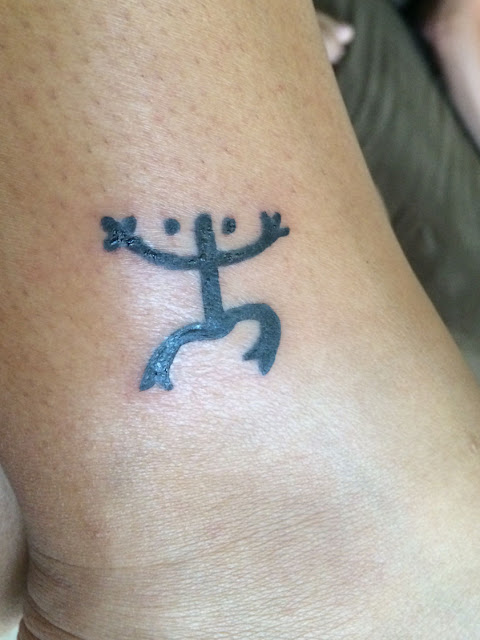











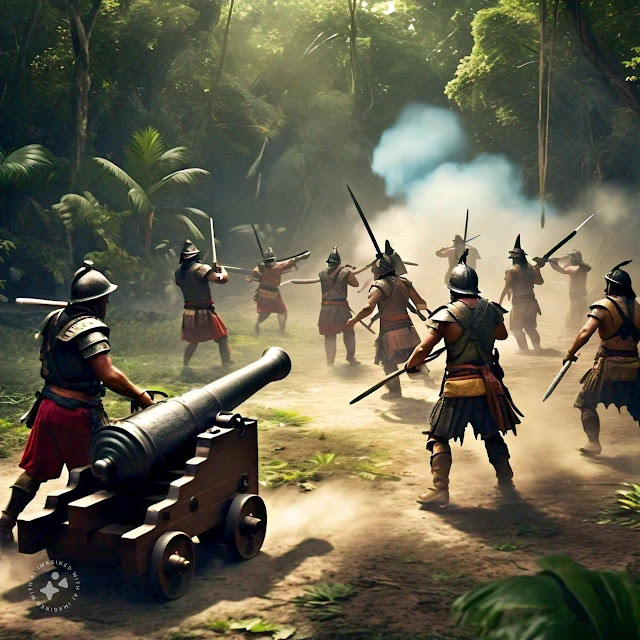


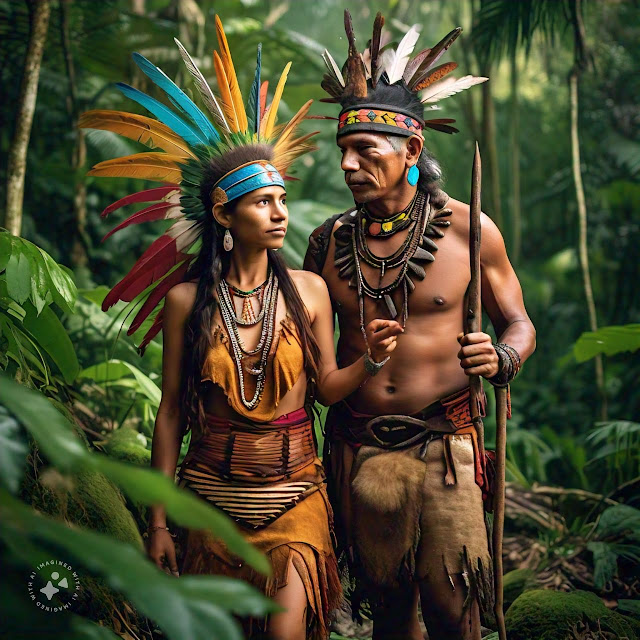




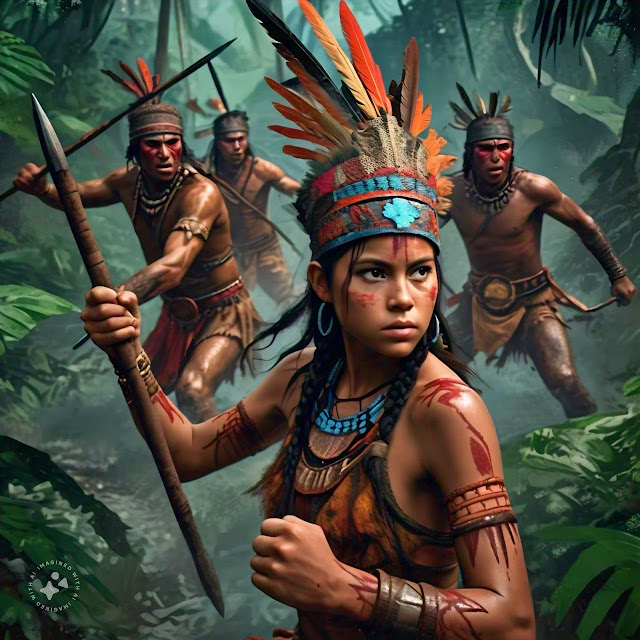


















 c
c






















































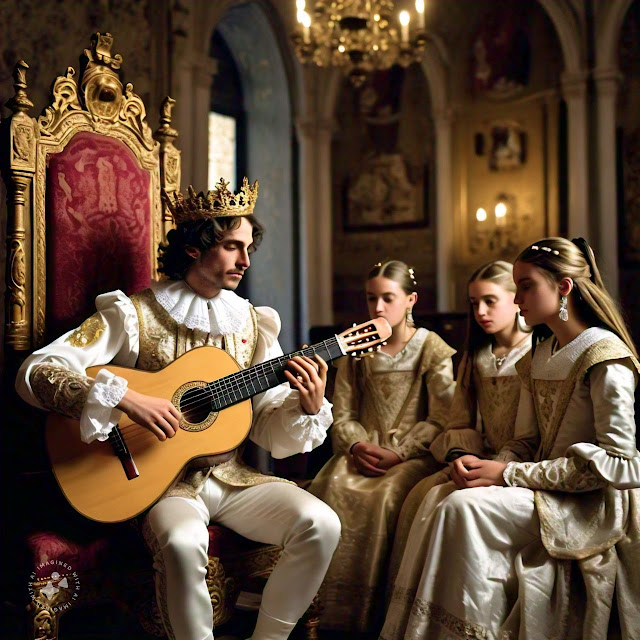







































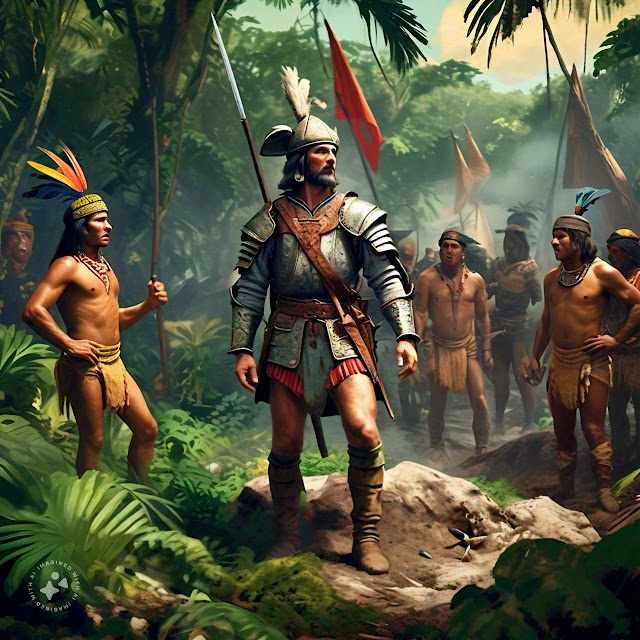






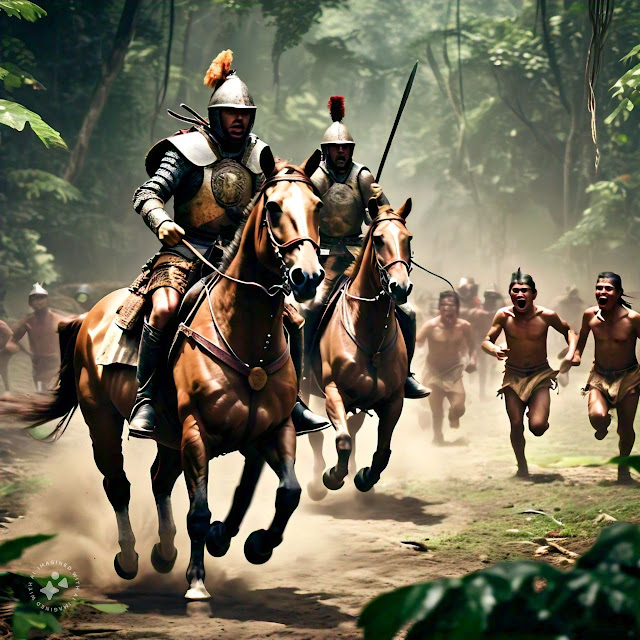

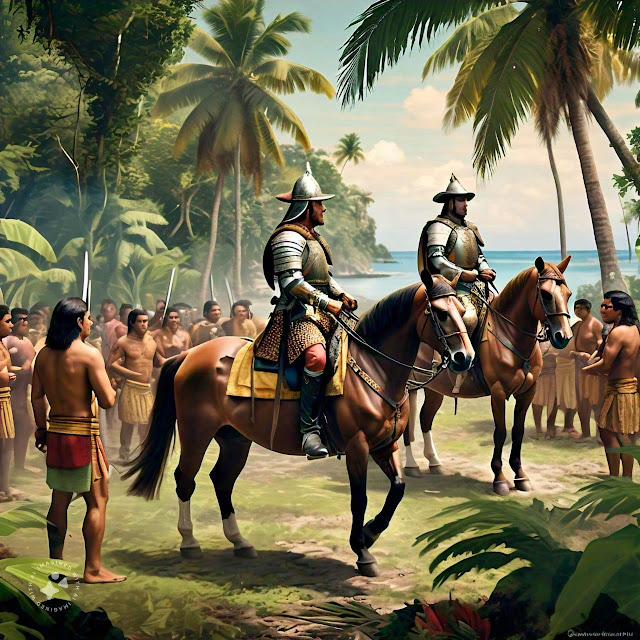














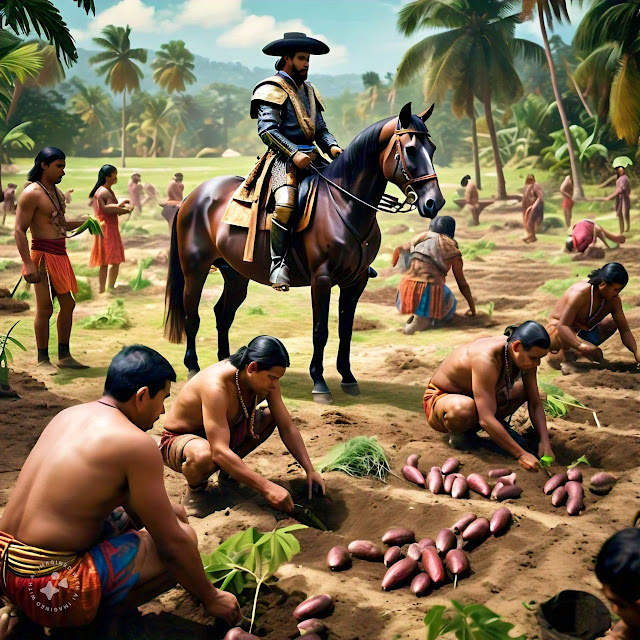






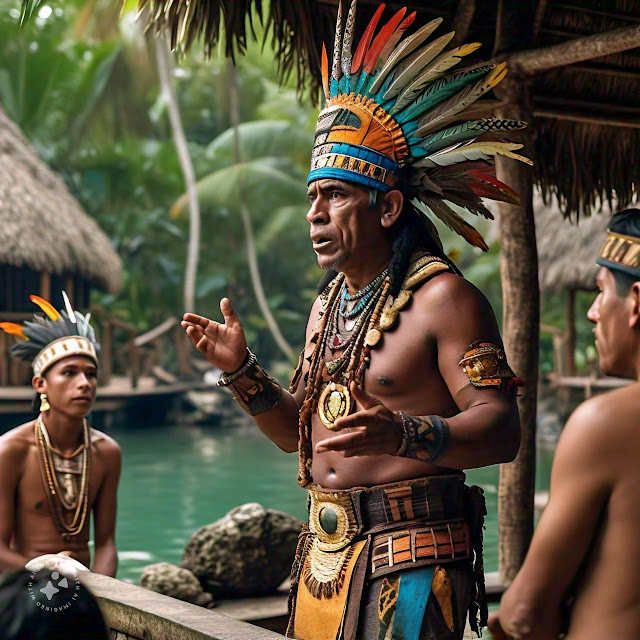











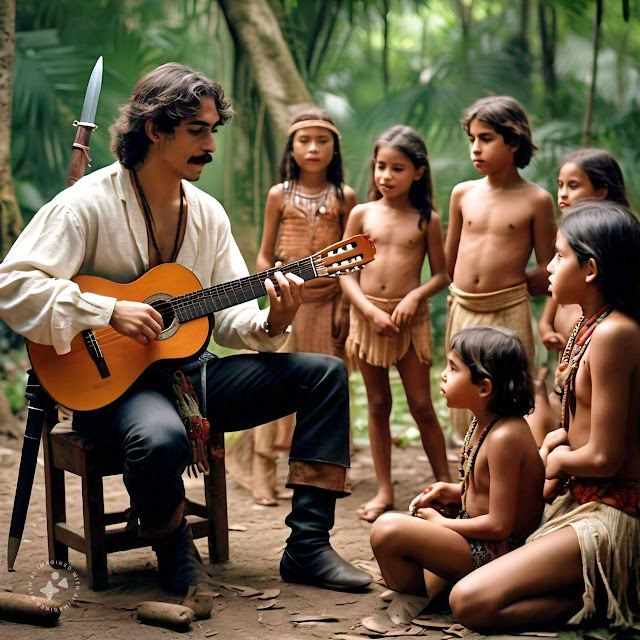
















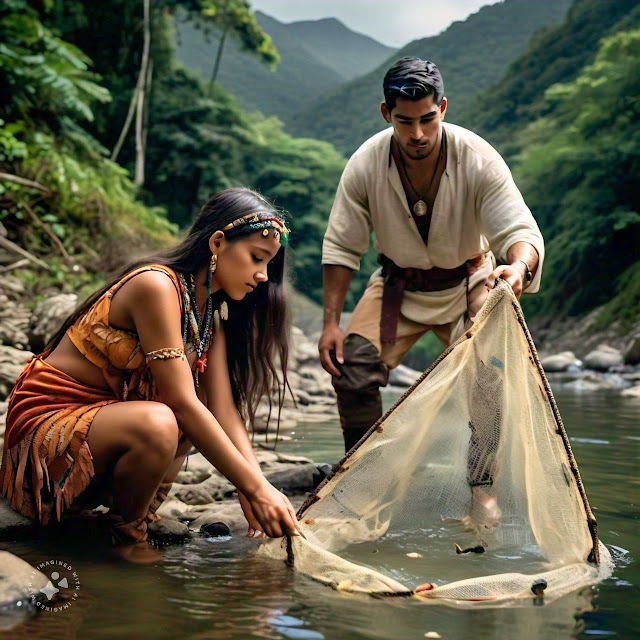


































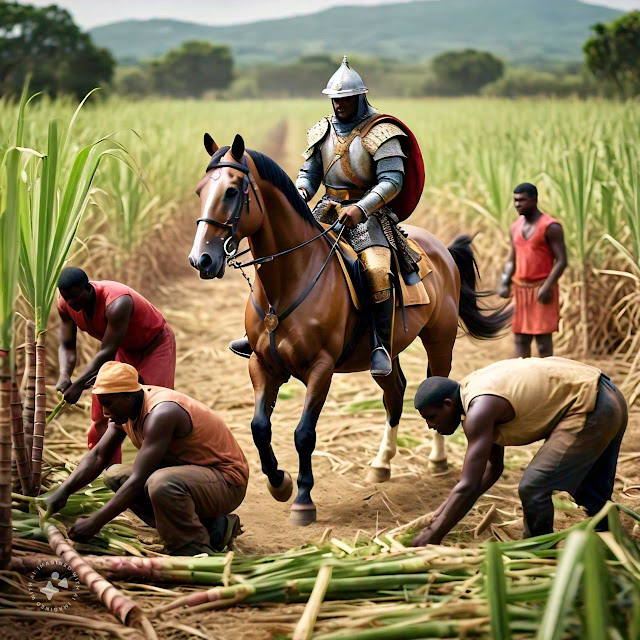

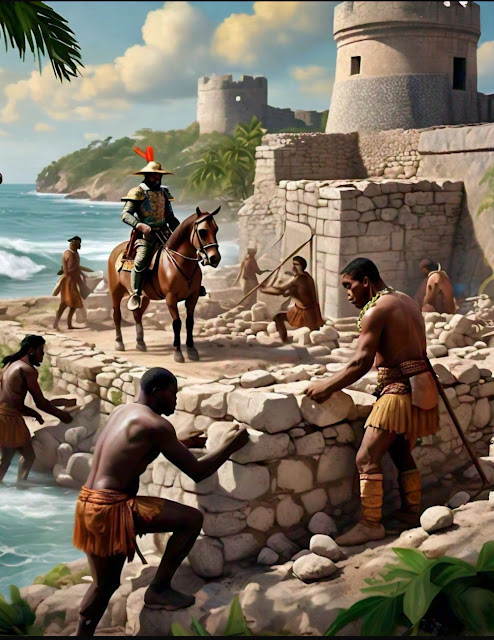

















 l
l










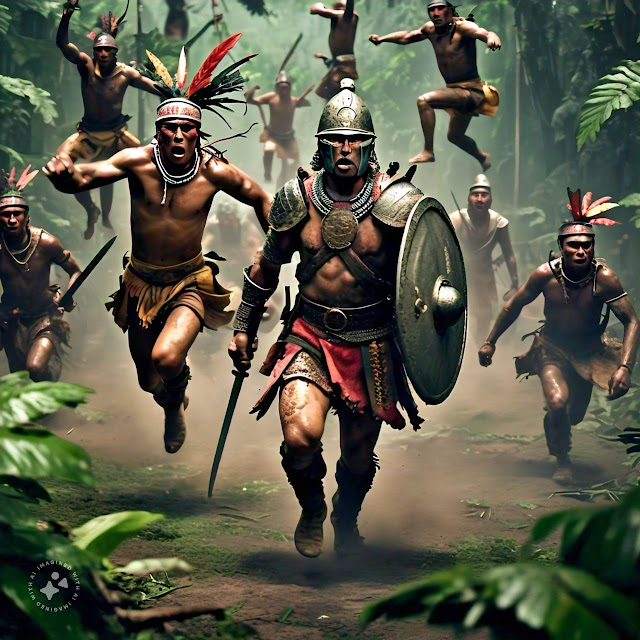















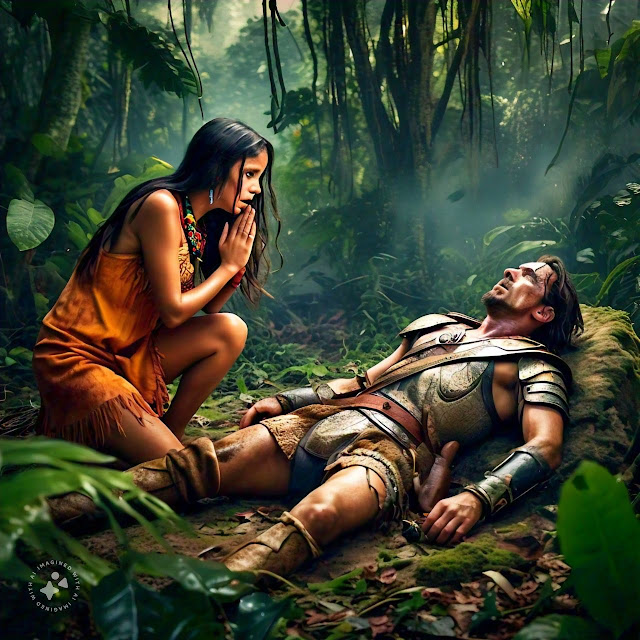















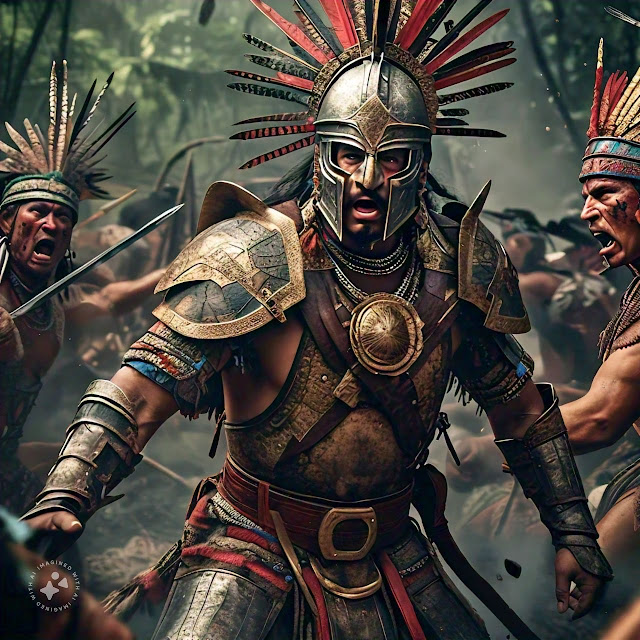








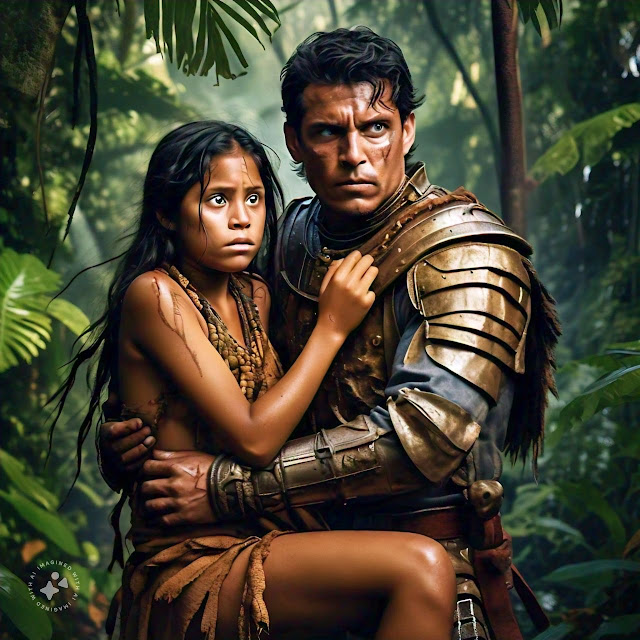
























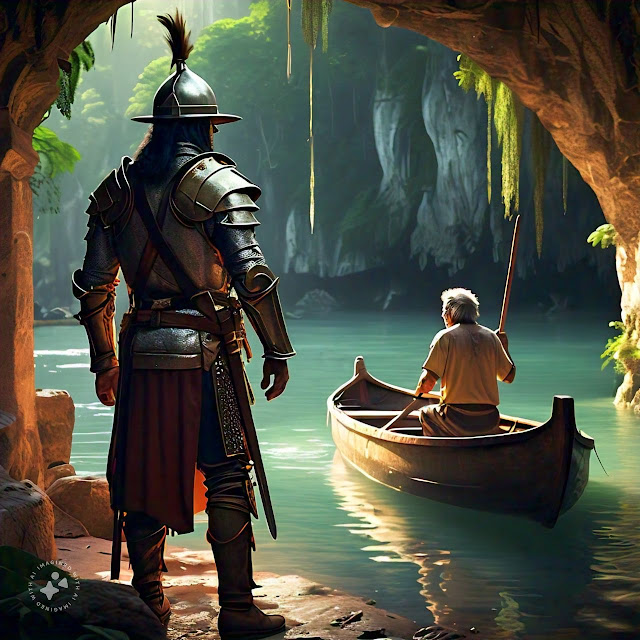






 lll
lll
















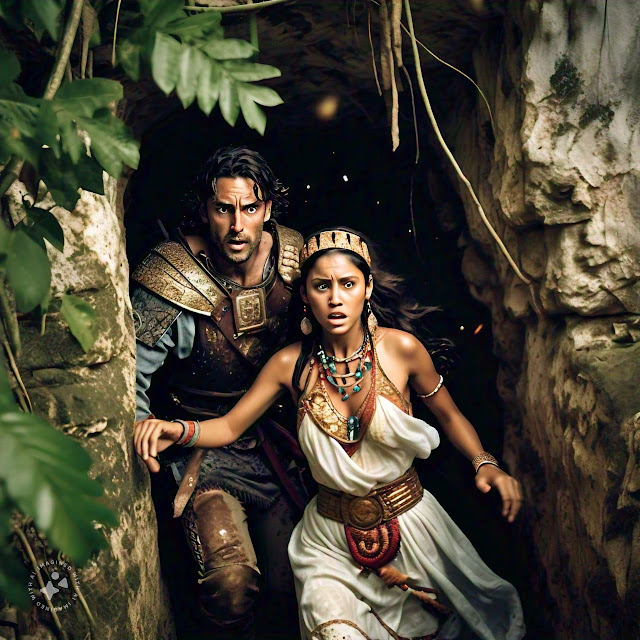



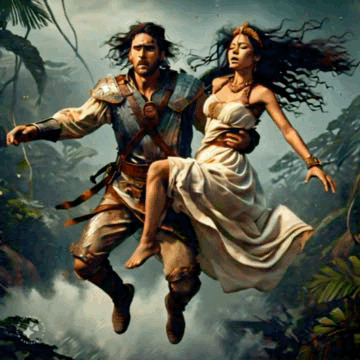

















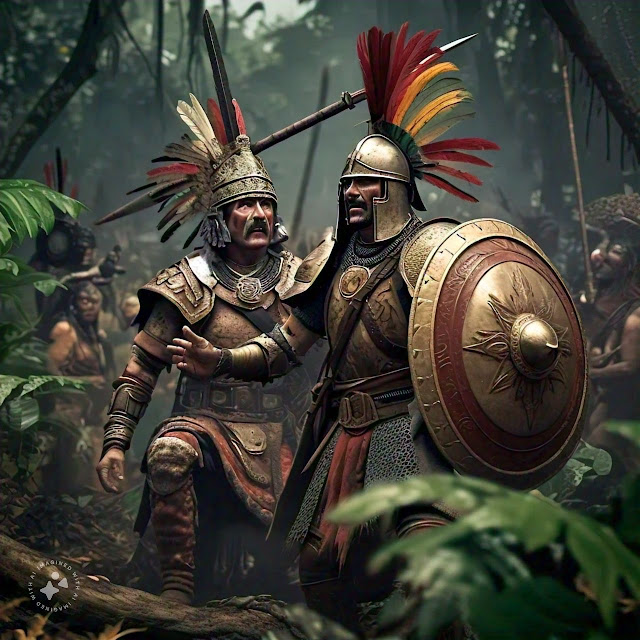





 l
l
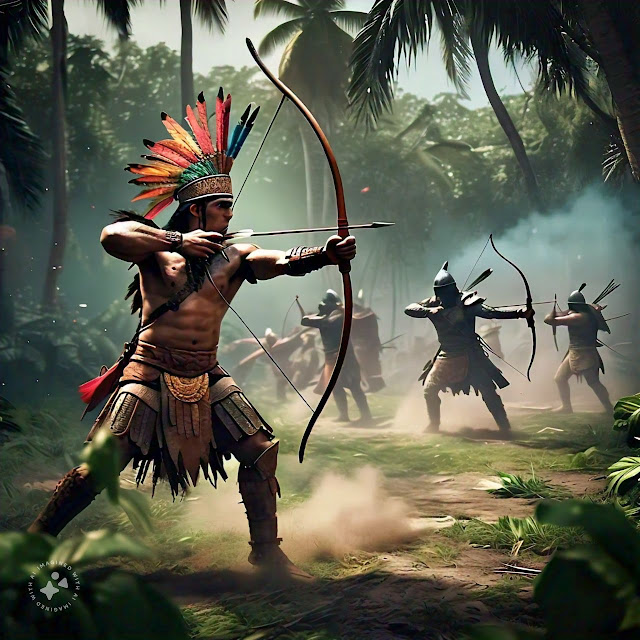





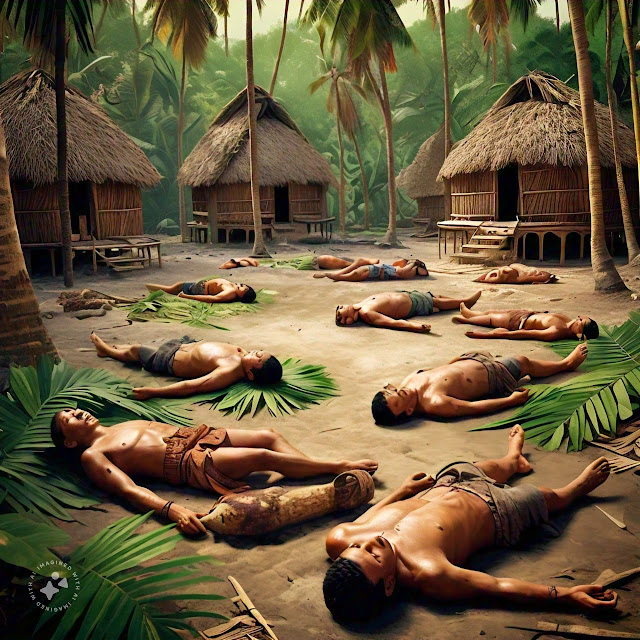
 l
l

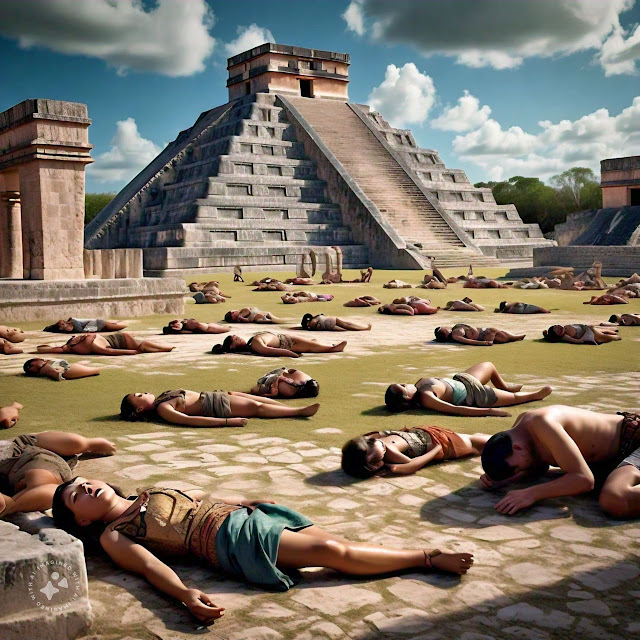



 l
l







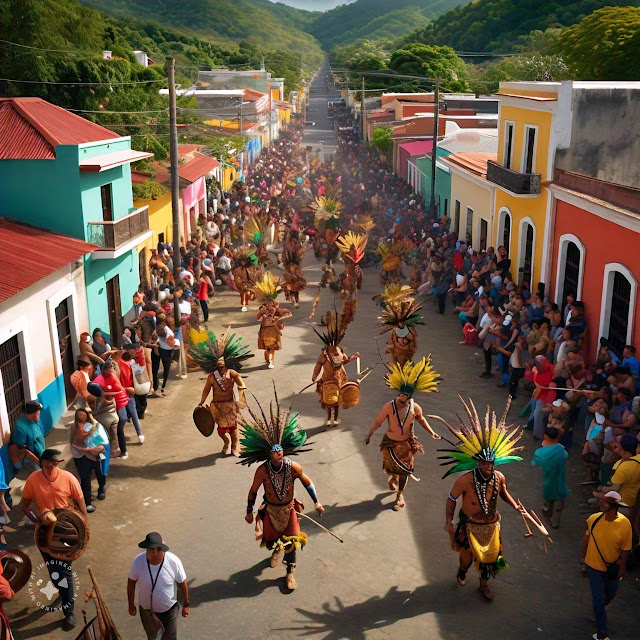

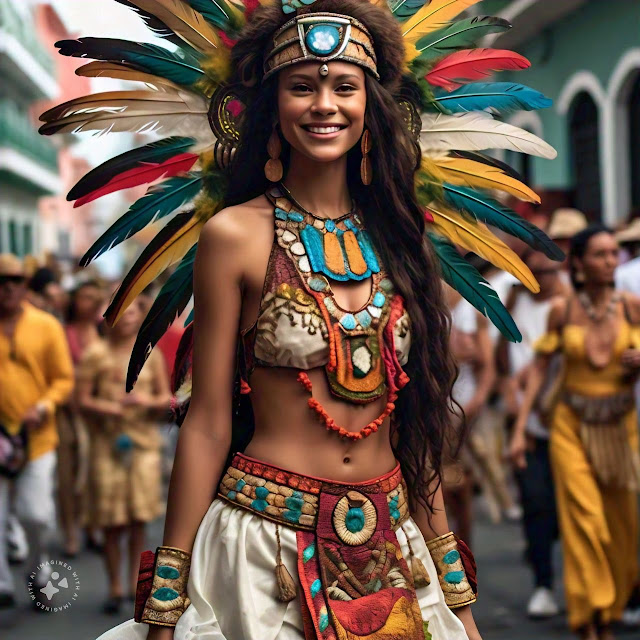










No comments:
Post a Comment